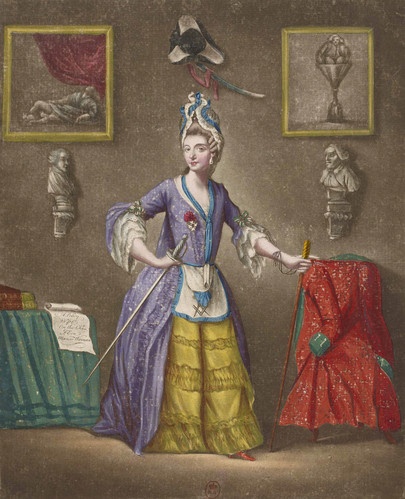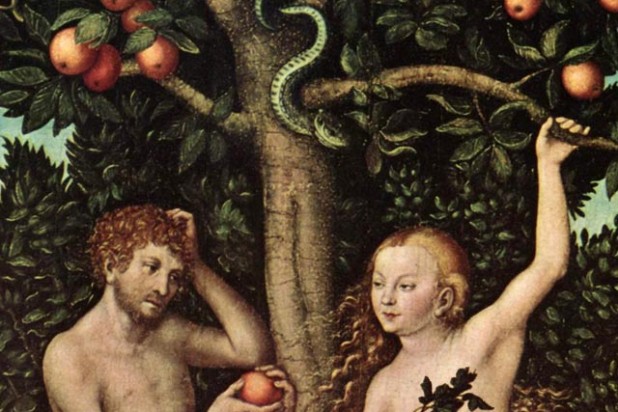In her autobiographical work Herzens-Geschichten, Elisa von der Recke lavishes praise on the formative influence of her stepmother, Agnes Elisabeth von Medem, who took charge of her upbringing and education in her eleventh year. According to von der Recke, it was at this time that her stepmother was shocked to discover that she could barely read or write, as a result of living with her grandmother. [1] Consequently, Agnes ensured that Elisa lived with her father and stepmother. Thenceforth, an extremely close bond developed between Agnes and Elisa, with the latter describing how ‘my stepmother was the dearest to me on earth’ and how her words ‘were like gospel to me”[2]. This intimate emotional relationship was reinforced by Agnes’s astute tutelage of her stepdaughter. As Elisa records, her stepmother had a famed talent for composing poetry in Courland, and was keen to impart her knowledge of literature and plays to her protégé. Indeed, Agnes asked Elisa to learn verse by heart and the pair would read novels and plays together. [3] At the time of her initiation as a Scottish Mistress Mason in May 1779, Agnes von Medem was in her early sixties. Once again the writings of Elisa von der Recke furnish us with valuable information about her stepmother’s involvement in Cagliostro’s adoptive lodge at this time.
Thus, we learn from von der Recke that Cagliostro allowed Agnes to attend his lectures and to participate in magical experiments in the adoptive lodge prior to her initiation into the order. Indeed, in her memoirs von der Recke writes that she asked Cagliostro why he had made an exception to the rule in allowing her stepmother to attend lodge meetings. In reply Cagliostro is said to have argued that every member must be treated according to their character.[4] In other words, it would seem that Cagliostro recognized the intellectual prowess of Agnes von Medem and wanted to encourage her participation.
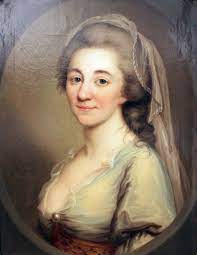
Consequently, after Agnes had attended numerous lectures and magical experiments during lodge meetings, von der Recke notes that ‘after three weeks we travelled again to Alt-Auz [the Medem country estate at Wilzen] because Cagliostro himself, prior to his journey to St. Petersburg, wanted to initiate my stepmother (now deceased) and other members who had a capacity for magic into the Lodge of Adoption’.[5] His apparent aim was to ‘gradually initiate them into the sacred mysteries’, which was seemingly not such a slow process, as von der Recke describes how the new members were “given the third degree” at this meeting.[6] The initiation ceremony was then followed by a lecture on the dangers and beneficial influences of magic and a séance involving Elisa’s nephew in the guise of a spirit conduit.
Did Agnes Elisabeth von Medem’s intellectual curiosity, combined with her venerable age, lead to her being initiated into the higher degree of Scottish Mistress Mason?
Unfortunately, von der Recke’s memoir does not enlighten us on this matter. However, what is apparent from von der Recke’s autobiography and memoir, regarding her stepmother, is that Agnes von Medem possessed a dynamic thirst for knowledge, which she shared with her stepdaughter and that did not go unnoticed by Cagliostro. This intellectual prowess may well account for the honour bestowed upon Agnes Elisabeth by Cagliostro in initiating her as a Scottish Mistress Mason.
Irrespective of the reasons behind Agnes Elisabeth von Medem’s initiation into this seemingly higher degree, the Masonic certificate in the RGVA archives throws new light on her participation in adoptive Freemasonry. Moreover, in combination with the literary works of Elisa von der Recke, one is able to gain fresh insights into the burgeoning of women’s agency among a narrow strata of late eighteenth-century Baltic German noblewomen.
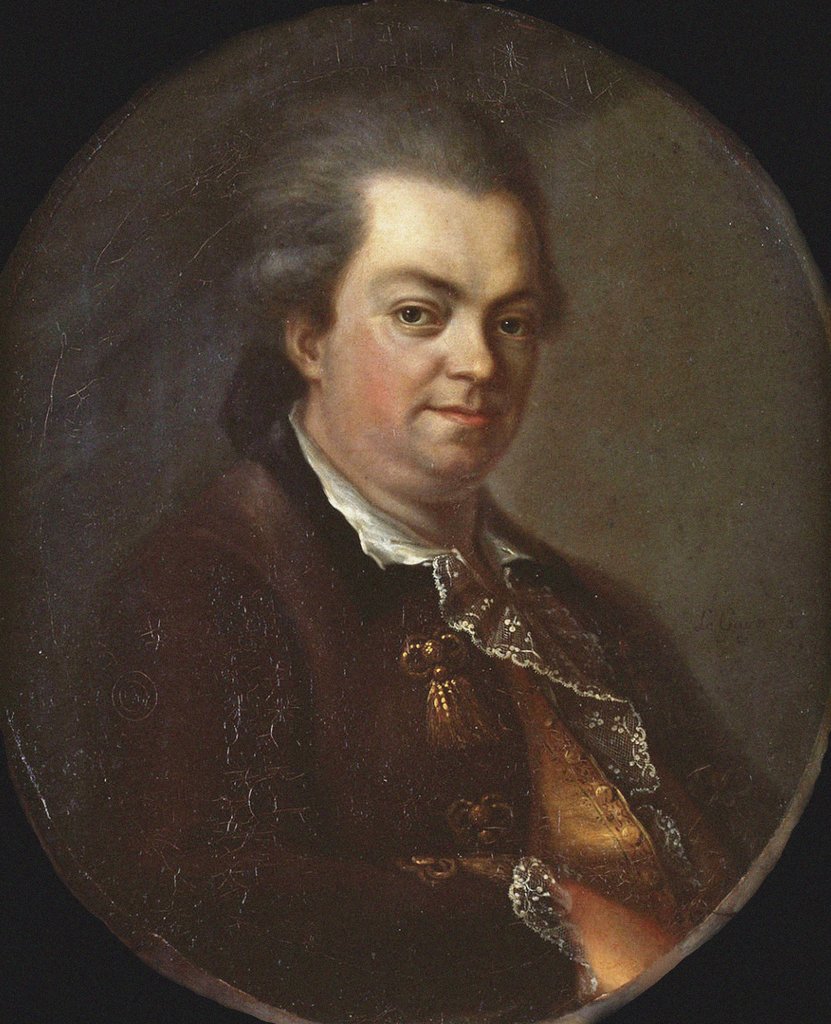
The Old Testament Imagery of the Adoptive Rite Certificate
A conspicuous feature of Agnes von Medem’s Masonic certificate is the Biblical imagery drawn from Genesis, that can be seen below and on each side of the main script. To the left is depicted a serpent wrapped around the Tree of Knowledge of Good and Evil in the Garden of Eden, for example, whilst at the bottom of the certificate one can see Noah’s Ark. Furthermore, to the right one can see an image of ]acob’s Ladder. The inclusion of such depictions from Genesis in the certificate reveals that the Cagliostro-Strict Observance lodge in Mitau embraced key elements of Old Testament symbolism, which became the cornerstones of the Adoptive Rite as it began to flourish in France and elsewhere in the 1760s.
The temptation of Eve by the serpent in the Garden of Eden plays a crucial role in the Adoptive Rite, particularly in relation to the second (Companion) degree. In general terms, in both male and adoptive Freemasonry the lodge symbolically represents the pristine Garden of Eden, in which initiates strive to retrieve Adam and Eve’s original virtue in a fallen world. Yet, in contrast to the Judeo-Christian tradition of the irrevocable nature of original sin, the ritual drama of the second degree of the Adoptive Rite offers women the chance of redemption and the opportunity to ‘walk more sure on the path of virtue”[7]. As a French manuscript from the 1770s describes: ‘Take the fruit of the tree of life. As soon as you will have tasted from it you will have the knowledge of good and evil”.[8] Caution in eating the apple is also stressed, as the female initiate was exhorted not to eat ‘the pip that represents the germ and the seeds of vice”.[9]
On the successful initiation of a female candidate, an oration would then ensue, which commonly stressed the need to vigilantly guard against the vices of curiosity in the worthy pursuit of Masonic virtue.
No documented record of the ritual of the Mitau adoptive lodge would appear to be extant. However, von der Recke’s memoir does provide a valuable insight into how the symbolism of the temptation of Eve was at the forefront of Cagliostro’s mind when he sought to warn Elisa against the temptation of straying from the narrow path of magic that leads to virtue and knowledge:
Look out for yourself, guard against continually asking for the Why of things when I am not by your side(…) Eve, Who fell from biting an apple, and caused the whole human race to fall is only a magical parable, showing that curiosity, vanity and ambition, bring misfortune to thousands upon thousands of members of the race. The Path of Magic, which you think of treading and to which you are now initiated through your acceptance as a Sister of the Order, is extremely dangerous .[10]
According to von der Recke, Cagliostro also delivered a lecture in Mitau in which he invoked another parable from Genesis in order to warn against ill-principled curiosity:
‘If curiosity is not founded on virtue and a bent towards perfection, it is injurious. Lot’s wife is proof of this’.[11] This too is reminiscent of the rituals associated with French and Dutch interpretations of the Adoptive Rite. In a contemporary manuscript, for example, the catechism of the third degree of Mistress includes the following reference to the Genesis parable:
[Question] ‘What represents the wife of Lot, changed into a statue of salt’? [Answer] ‘That our curiosity must not seek to penetrate the mysteries that are hidden from us’.[12]
The depiction of Noah’s Ark at the base of the certificate is also redolent of the broader use of this Old Testament symbolic motif in contemporary French and Dutch interpretations of the Adoptive Rite. The symbolism of Noah’s Ark was commonly utilised, for example, in Apprentice degree tracing boards. One such description of the tracing board used during the initiation of Masons into the Apprentice Degree, published in The Hague in 1775, notes the following about the symbolism of Noah’s Ark:
Noah’s Ark represents the heart of man, the eternal play of passions, as with the Ark in the waters of the Deluge; and teaches us that we should so fortify our souls by the precepts of virtue, amid all this turmoil we are like Noah and his family, sheltered in the wreck.[13]
Hence, the inclusion of Noah’s Ark in Adoptive Rite symbolism served a two-fold purpose: to reinforce the sense of the lodge itself as an ark, alongside the need to conquer harmful individual passions by erecting, in metaphorical terms, a fortified ark to protect against the deluge of earthly temptations.
Lastly, on the right-hand side of the certificate one can observe an illustration of ]acob’s Ladder (as described in Genesis 28). As Jan Snoek notes, this Biblical motif was borrowed from the male Ordre Sublime des Chevaliers Élus, which emerged in the early 1750s as the first chivalric Masonic Order.[14] As With Noah’s Ark, one can note how an image of ]acob’s Ladder was used on the tracing boards employed during the reception of initiates into the Apprentice Degree.
In a manuscript dating from 1770, for example, a description of the tracing board states: “The Ladder traces the way to felicity by the union of the principal virtues: Love of God and of one’s neighbours, symbolized by the two uprights of the ladder, of which the several rungs represent the other moral virtues which follow from the first two”.[15]
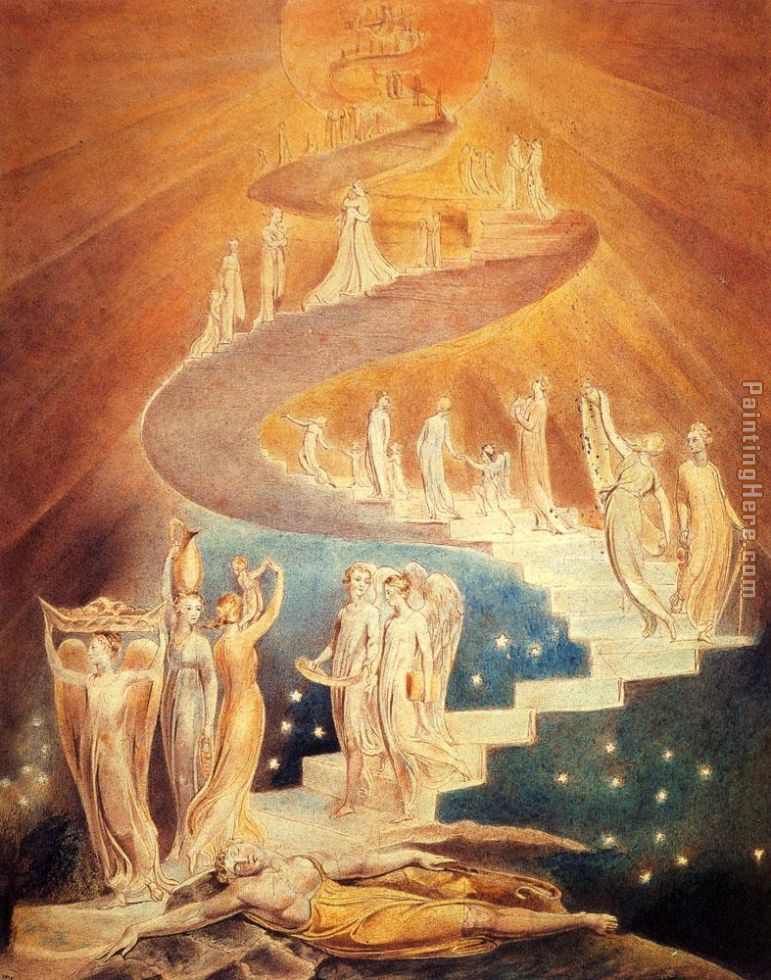
Thus, in large measure Agnes von Medem’s certificate – alongside von der Recke’s memoir – illustrates the extent to which the Cagliostro / Strict Observance mixed-sex lodge in Mitau incorporated Genesis-related themes common to contemporary expressions of the Adoptive Rite. Interestingly, Cagliostro’s development of the Egyptian Rite in France in the mid 1780s continued to draw on the potent symbolism of Eve’s temptation by the serpent.
According to the description of J.M. Ragon, the lecture accompanying the Apprentice Degree ceremony of the Egyptian Rite included a discourse on how the serpent twisted around the tree of knowledge denotes pride and the cause of human misery.[16]
Moreover, the ritual placed an emphasis on the fateful consequences of Eve ‘eating the fatal seed’ of the forbidden fruit. Yet, this same seed, ‘by the Grace of the Lord’ also contains a kernel of hope, whereby it provides virtuous initiates with a way of repairing the damage and to reclaim “the fruit of glory of the woman and the recovery of the power granted to man by the supreme being’.[17] Consequently, the principal ceremony of the second Companion Degree involved the initiate cutting off the head of a serpent (we do not know if this was in a real or metaphorical sense). In the proceeding instruction, the candidate then had to pronounce: ‘I have recognised the basis of my pride; I have assassinated the vice and the prima material, which is the proud spirit of the seed that took away our dominion’.[18]
The pivotal role accorded to the temptation of Eve and the significance attached to the apple pips in Cagliostro’s Egyptian Rite is entirely redolent of Adoptive Rite traditions.[19] However, it is noticeable that other aspects of symbolism drawn from the Book of Genesis that are in evidence in the von Medem certificate-namely Noah’s Ark and Jacob’s Ladder-are conspicuous by their absence in the Egyptian Rite.
By the mid 1780s the Rite of Strict Observance had effectively ceased to exist. Consequently, it is possible that Cagliostro used this as an opportunity to mould his own form of the Adoptive Rite. It may be that having established an adoptive lodge in Mitau within the Strict Observance system in 1779, Cagliostro chose to retain some aspects of the more conventional Genesis-based symbolism of this time, whilst also embracing the chance to realise his own vision of mixed-sex Freemasonry.
Conclusion
The von Medem certificate does not enlighten us regarding all aspects of the workings of the Lodge of the Three Crowned Hearts, particularly in regard to its rituals and ceremonies. However, it does reveal that Cagliostro was far from being a complete maverick at this juncture in his peripatetic life. While he was certainly one of the greatest traders at ‘the Rag Fair of intellectual roguery’'[20], the certificate demonstrates that in 1779 he worked within both a structural (the Strict Observance) and symbolic (the Book of Genesis) framework. Yet the certificate also attests that Cagliostro was held in sufficient esteem by 1779 to be able to stretch these social and cultural bounds. In this regard, one must remember that Agnes von Medem’s husband and brother-in-law were not naïve Masonic novices residing in a provincial backwater. On the contrary, they were among the most senior members of the Strict Observance in one of its key citadels of power.
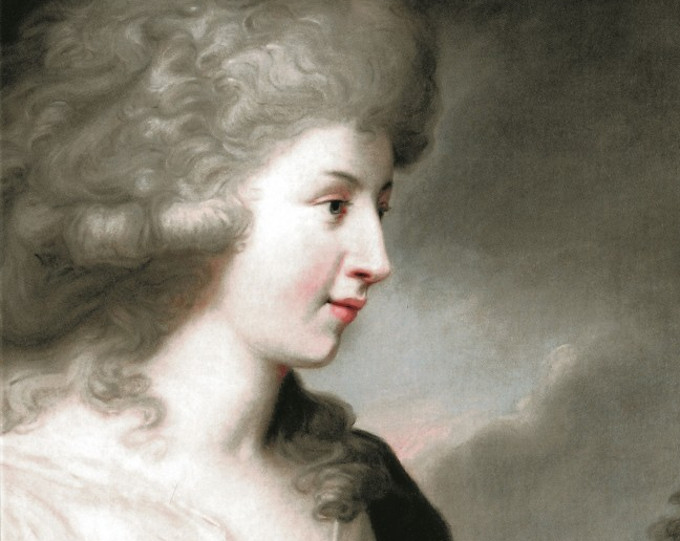
However, it took the arrival of the charismatic figure of Count Cagliostro to inaugurate a seismic shift in their Masonic lives: the active participation of women in their fraternity. Here, it is important to stress that Cagliostro did not conjure up willing female initiates ex nihilo. Like with all great opportunists, he simply arrived on the scene at a fecund time, when the likes of Agnes von Medem and Elisa von der Recke were craving to partake in the intellectual and spiritual manna supposedly offered by high-grade Freemasonry.
By Dr Robert Collis and courtesy of Ars Quatour Coronatorum , Transactions volume 125, 2012, pages 240-247, “Cagliostro, the Adoption Rite and the Masonic Certificate of Agnes Elisabeth von Medem”
[1]E.von der Recke, Herzens-Ceschchten: einer baltischen edelfran. Erinnerungen und Briefe von Elisa von der Recke (Stuttgart: Verlag Robert Lutz, 1921),75
[2] E. von der Recke, Herzens-Ceschchten, 82,86
[3]Von der Recke, Herzens-Ceschchten , 75,82. Interestingly the names of Agnes and Elisa appear as subscribers to a 1776 edition of Friedrich Karl Fulda and Johann Georg Meusel’s Sammlung und abstammung germanischer wurzel=worter (Halle, 1776). This is significant, as they are the only female subscribers (in a total of over 250) throughout the German-speaking world, thereby illustrating the rare involvement of aristocratic women in intellectual pursuits. See F.K. Karl Fulda and Johann Georg Meusel’s Sammlung und abstammung germanischer wurzel=worter (Halle, 1776). Johann Justinus Gebauers wittwe and Jacob Gebauer,1776). The names of Agnes Elisabeth von Medem and Elisa von der Recke appear in the alphabetical “Berzeichnis der Subscribenten”, which features at the beginning of the work (without page numbers).
[4] E. von der Recke, Nachricht von des beruhmten Cagliostro Aufenhalt in Mitau, im Jare 1779, und von dessen dortigen magischen Operationen (Berlin and Stettin: Friedrich Nicolai, 1787),39.
[5] E.von der Recke, Nachricht,104. On the other lectures attended by Agnes von Medem, see Von der Recke, , Nachricht, 87-88,92-3.
[6] E.von der Recke, Nachricht,104. For an English translation of this passage, see P.A.Malpas, “Cagliostro – A Messenger long misunderstood, The Theosophical Path (April 1933),517.
[7] Maconnerie d’Adoption, 18r. Cited from Snoek, Initiating Women, 51.
[8] Maconnerie des Dames (ou)L’azille Enchante’ Ou la Reunion des deux Sexes, Bibliotheque nationale de France FM4 1323, 40v. Cited from Snoek, Inititating women, 51.
[9] L’Adoption ou la Maconnerie des Femmes, En trios Grades a la Fidelite (The Hague: P.Gosse & Pinet,1775), 25.
[10] Malpas, “Cagliostro”, (Oct, 1932), 253; von der Recke, Nachricht, 46-47.
[11] E. von der Recke, Nachricht,126. Also see Ivanoff, “Cagliostro in Eastern Europe”, 72.
[12] L’Adoption ou la Maconnerie des Femmes, 47.
[13] Ibid., 7
[14] Snoek, Initiating Women, 5.
[15] Maconnerie des Dames ou Ordre d’Adoption Pour le Frere d’Anieres Lieutenant d’Infanterie au Service de Brunwic (1770), The UGLE, MS YFR.858.MAC,8. Cited from Snoek, Initiating Women, 440.
[16] Ragon, Francmaconnerie,111.
[17] Ibid.
[18] Ibid, 112.
[19] On the particular significance of apple pips in the Adoptive Rite, see Snoek, Initiating Women, 40-41,51,127,324,331,333,349,421,429,444,494.
[20] A.E.Waite, The Secret Tradition in Freemasonry, vol 2.(London: Rebman Limited, 1911),133.
- Influencia de la Masonería en Chile - April 29, 2024
- Pomegranate in Freemasonry – its significance - March 11, 2024
- Inns and Innkeepers’ incidence in Freemasonry expansion - February 28, 2024

